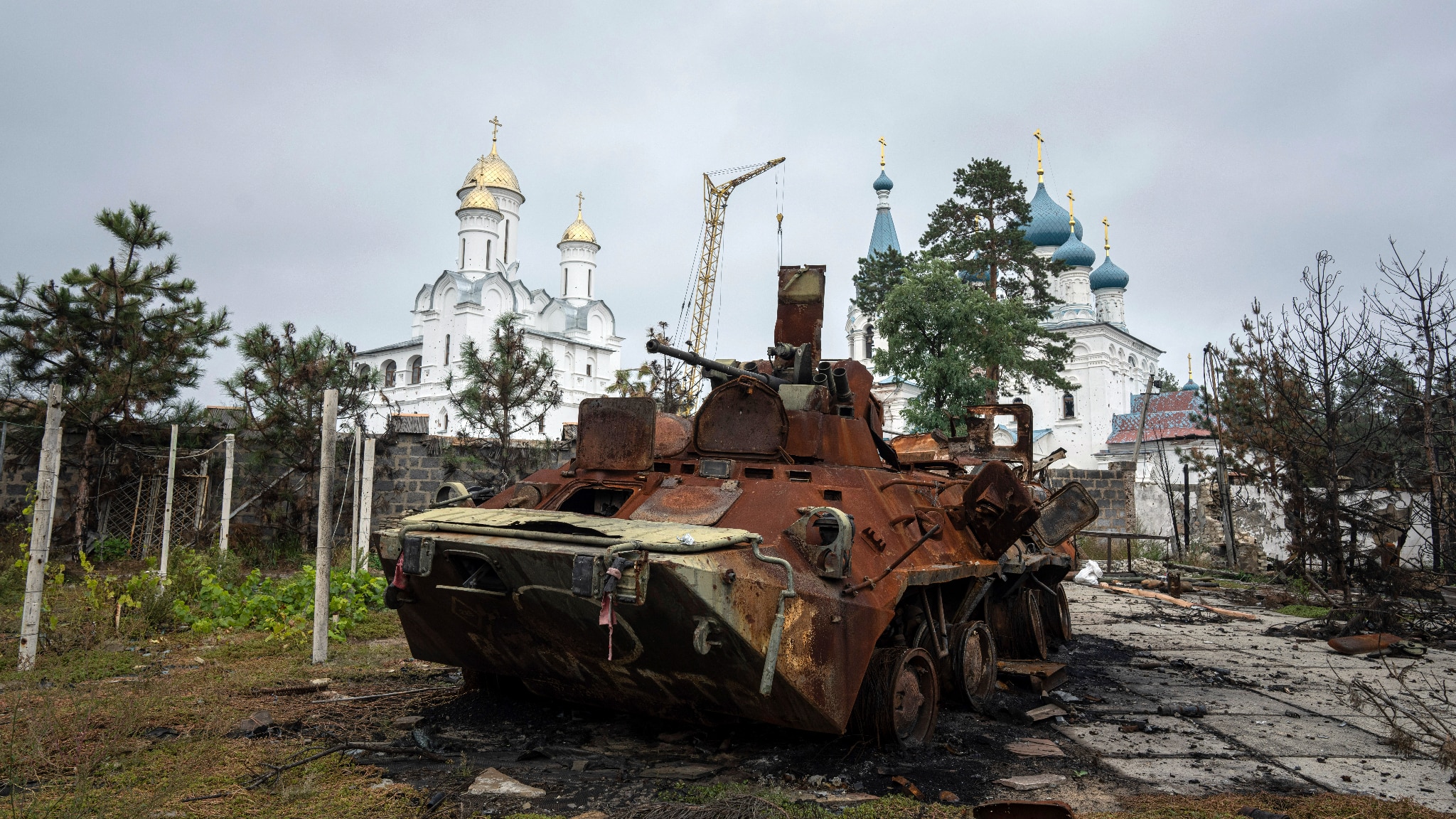The
farce referendums
in four Ukrainian regions, and their
illegal annexation
, seem to have had the opposite effect to that desired by Putin.
Far from being intimidated, Ukrainian forces are advancing along different lines in what Moscow should now consider its territory.
The conditional is a must, given that today the Kremlin spokesman
Dmitry Peskov
said that Russia "will consult the population on the borders" of the Kherson and Zaporizhzhia regions (whatever that means), while for those of Luhansk and Donetsk they are valid the borders of 2014: which would mean renouncing all the territorial conquests of the invasion that began on February 24.
It is difficult not to interpret this issue as a sign of weakness, which is added to the multiplication of
critical voices in the Russian media
until a few days ago granite in support of Putin, to a growing
turmoil in the ranks of the army
, to the considerable difficulties that the "
Partial mobilization
"
of citizens
On the pitch, the Moscow blanket appears to be short.
The Russians do not seem to be able to defend the whole broad front that opposes them to the Ukrainians, if they concentrate on one side, they discover themselves on the other.
At the same time, since last year they have been spending a lot of energy in the vain attempt to break through the defenses in the direction of
Bakhmut
, without ever succeeding.
To the east, Ukrainian forces have been advancing continuously since early September.
After the liberation of a large portion of the Kharkiv region up to the city of
Izyum
, and that of
Lyman
, in the Donetsk region, the military from Kiev entered
the Luhansk region
, which from early July to mid-September had been l 'the only one to be wholly controlled by the Russians and until a few days ago it was 99%.
The defenders are advancing along four lines.
The two northernmost ones, from Kupiansk and Izyum, point to the district capital
Svatove
.
A little further south, from Lyman, they took control of a large section of the road that connects Svatove itself to
Kreminna
, another small town that seems close to being surrounded.
Immediately south of Kreminna are
Rubizhne
,
Severodonetsk
and
Lysychansk
, three largest cities that fell into Russian hands in early summer and which could be attacked once control of the transport routes further north is consolidated.
The novelty of the last 24 hours, however, was the
rekindling of the southern front
, that of the
Kherson
region , from where very few decisions had arrived in recent weeks, also due to the "
operational silence
" imposed by the Ukrainian military command.
Most of the Russian forces are currently concentrated in this region, blocking the Ukrainian advance along the highway between Kherson and Mykolaiv, to the south, near the Black Sea coast.
As many times since the start of the counter-offensive, however, Kiev attacked
where the Russians least expected it
: from the North.
In fact, from a clear sky yesterday the news of the liberation of
Zolota Balka
arrived , on the eastern bank of the Dnipro River, in the northernmost part of the region.
Today even the Russian Defense Ministry had to admit this advance, writing in a note that Ukrainian forces have "overrun our defenses" thanks to "tank divisions".
Yesterday evening, the Telegram channels and groups where military analysts and even ordinary Russian soldiers exchange news on what they call "special operation" were swept by
a wave of panic
, among those who claimed that the forces of Kiev had advanced by tens of kilometers and those who insisted on aviation support that did not arrive.
The next day the picture became clearer: the defenders advanced for more than 20 kilometers and arrived at the gates of
Dudchany,
where they fought all day.
Considering that for about a month they have consolidated another salient a little further west, it is possible that the plan is similar to that implemented in Lyman: encircle the occupants until they are forced to evacuate or surrender.
Moreover, escape routes from Kherson are scarce, as the Himars rocket launchers supplied to Kiev have been
hitting bridges over the Dnipro River for months,
even those of barges.
Twitter @ DefMon3
The situation north of Kherson as of 3 October 2022
Finally, today the Ukrinform agency, citing the Ukrainian military command, reported that in the
Kyrylivka
area , in the southern part of the Donetsk region and just north of the martyr city of
Mariupol
.
Soon to say whether this attack anticipates the opening of the third front in the direction of the port city conquered by Moscow in May after almost three months of siege.
Major General
Mick Ryan
, who heads Australian Defense College, wrote yesterday that "the different points where Ukraine is attacking, although geographically distant, are part of a single campaign, of an overall strategy"
According to Ryan, the Ukrainian forces implement a "
corrosion strategy
", which always starts with the use of artillery to reduce the enemy's fire capacity and logistics and drones and satellite imagery to look for weak points in which to attack.
This way of operating also has a "profound psychological impact on the Russians," he explains, misleading them and forcing them to take greater risks.
Ryan concludes: "What we have recently seen the Ukrainian armed forces do shows that they have
a great understanding of modern warfare
. This has caused a profound shock among the Russians at the political, strategic, operational and tactical levels. Russia must now respond on the matter. more levels to Ukrainian initiatives ".
It should be added that there is a widespread belief that this strategic ability of the Kiev forces is corroborated by constant collaboration with
Western
intelligence , in particular the British and the US.

